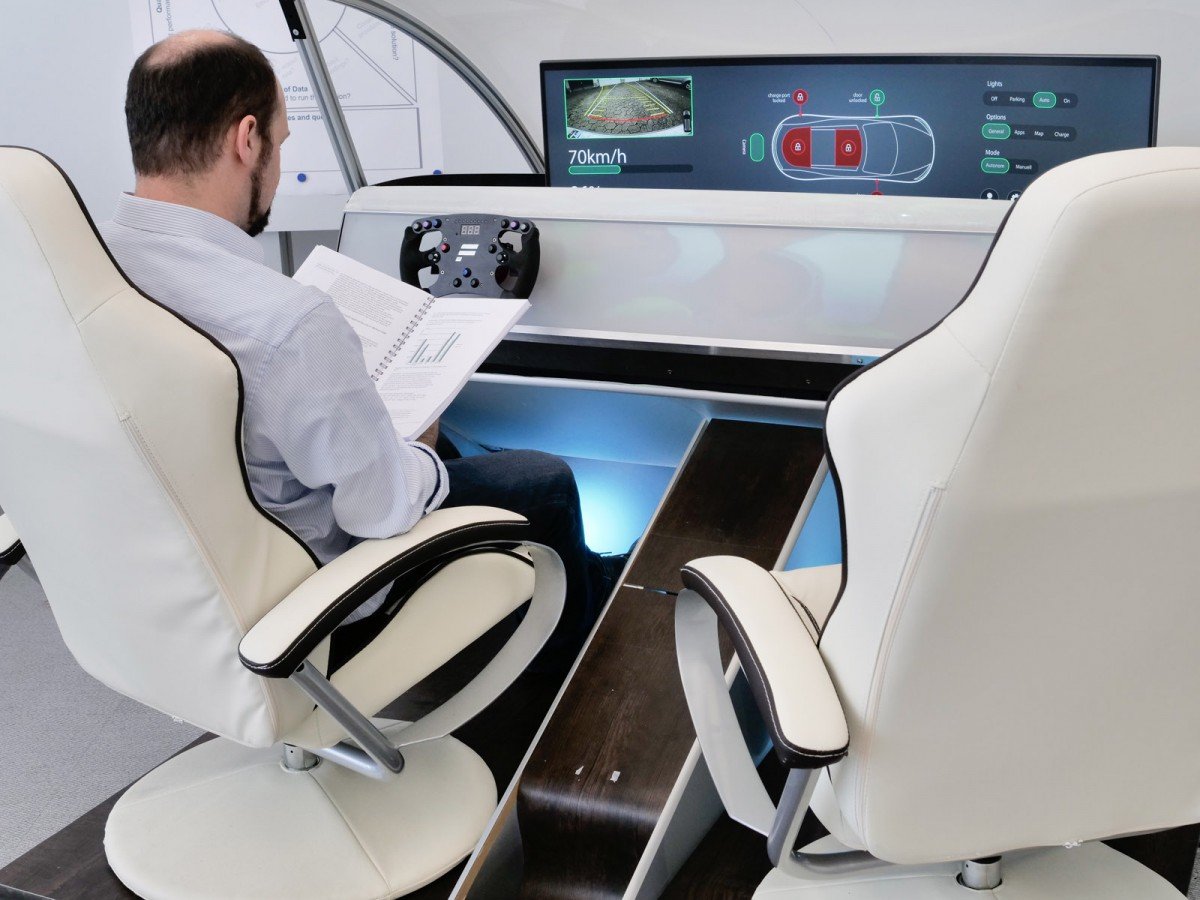
There are many different visions about the future of autonomous driving. One question that comes up in this context is: what does the passenger actually do when his car becomes an intelligent driver? Because even when it comes to driving the car, he hardly has to do anything. Researchers from the Fraunhofer Institute for Industrial Engineering IAO have now founded an innovation network, along with business and strategy consultants from McKinsey & Company and other project partners from different sectors, to adapt to tomorrow’s mobility – from the concept to the construction of a prototype. The aim of the Mobility, Experience and Technology Labs (MXT) is to determine the appropriate technologies, services and business models for the future in the short term and identify which visions have no chance in the industry.
MXT-Lab analyzes trends
The moment the driver turns into a passenger, he no longer needs to be focused on the traffic. He therefore has plenty of time to focus on other activities. This luxury can already be enjoyed by train drivers and passengers: you can sleep, read and enjoy the surrounding landscape. But that’s not all: when the vehicle drives itself, accelerates or brakes, the front window can obtain new functions. A built in display, for example, can give a new experience of the outside world with the help of additional information. It can also be darkened in order to watch movies. Depending on the individual desires, autonomous driving makes it possible to transform the vehicle into new living space, such as a mobile living room or office.
For Sebastian Stegmüller, scientist at the Fraunhofer IAO, those scenarios can definitely become reality in a couple of years. “In the early innovation phase, before product development has even started, we already choose an exciting approach which is worth developing further, “Stegmüller explains.
Dr. Tobias Schneiderbauer, project manager at McKinsey & Company, also outlines possible areas of application, such as voice supported services using artificial intelligence:
For example, if you drive past the opera, the ticket service appears on the display. Tickets for the Aida could then be purchased by driving past it.”
The alliance partners of the MXT-Lab are analyzing trends to help companies develop innovation projects. In doing so, they are responding to the almost endless innovation opportunities presented by the major trends in the automotive industry: automation, networking and electrification of vehicles, as well as new means of transport. “The digital transformation means that companies need to reorient and reposition themselves, but it also provides the possibility for new mobility services and driving experiences”, Stegmüller concludes.
Prototypes make autonomous driving concrete

The Mobility Innovation Lab is located in the Fraunhofer IAO in Stuttgart. Here, you can already see what tomorrow’s driving will look like.
In the state-of-the-art research environment for prototypes and creative workshops, there is, for example, a futuristic vehicle cabin with a modular dashboard, switchable windows, seats with a relax position, folding tables and an extendable monitor. Here, the interior experience of the future is demonstrated, as well as the interaction with future on-board electronics and special services such as language learning, pizza delivery or personalized entertainment services. Here you can also see a converted vehicle that responds to pedestrians. The lab also researches the possibilities of sustainable mobility in the city. Currently, the possibilities for an electric three-wheeled scooter are being explored.
With their research, the partners of the innovation network want to provide a good basis for lucrative business models and technologies. They are aimed not only at car manufacturers and suppliers, but also at companies in the entertainment and IT sectors. They also bring on board companies, municipalities and other players to support the innovation network with specific know-how. In addition, the network project is still open to interested companies that want to join the MXT-Lab.
Qualitative and quantitative studies
An important point of attention of the MXT-Lab is the execution of user surveys. These form the starting point for research into possible innovation possibilities. For example, in an initial sample study, the partners addressed the question of the extent to which the time released by automated driving is suitable for learning foreign languages. In addition to a quantitative online survey in Germany, China and the United States, an experiment was set up in the Mobility Innovation Lab. In this way, qualitative user declarations were collected. In addition to an interest in service in general, the scientists have also investigated the attractiveness of various technical implementations and driving applications. The information collected will stimulate the development of the automated driving experience and the vehicles.
Whatever will be developed in the future: the pleasure of driving a car will undoubtedly take on new dimensions as a result of autonomous driving.

